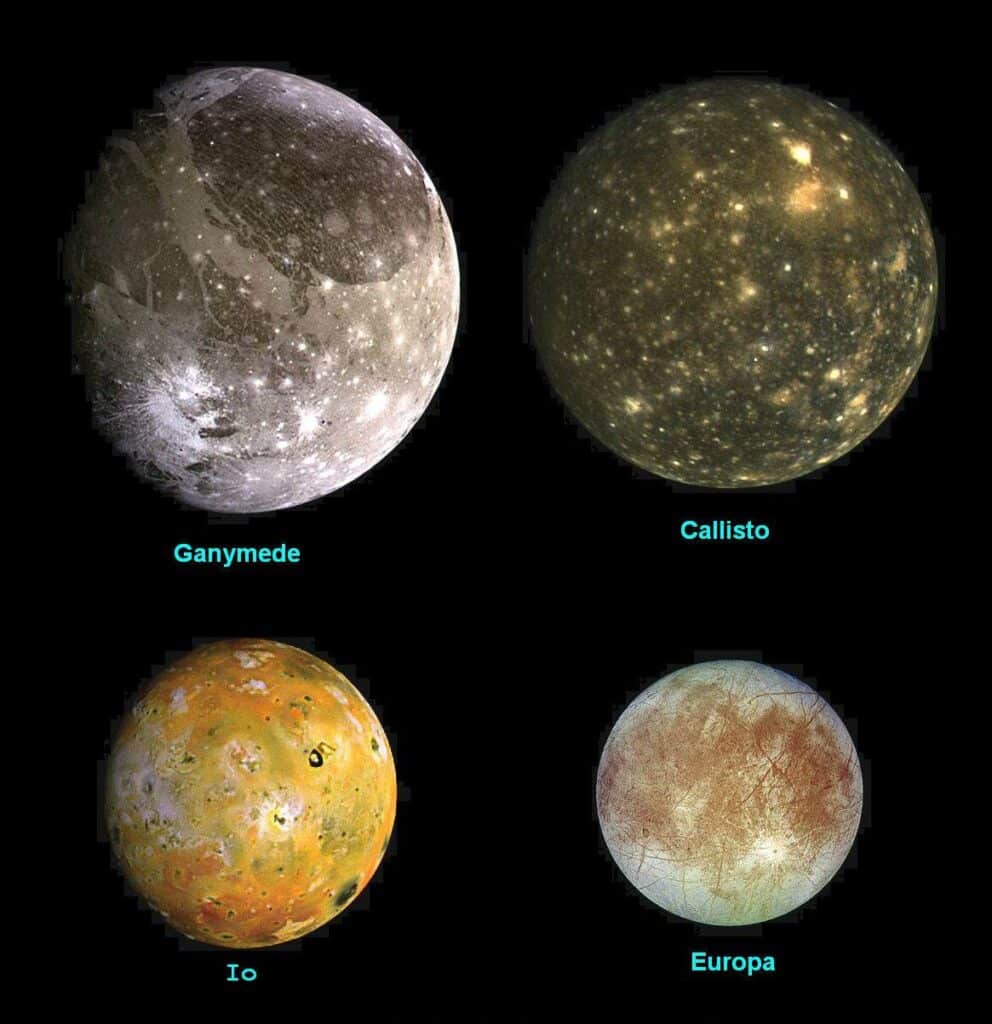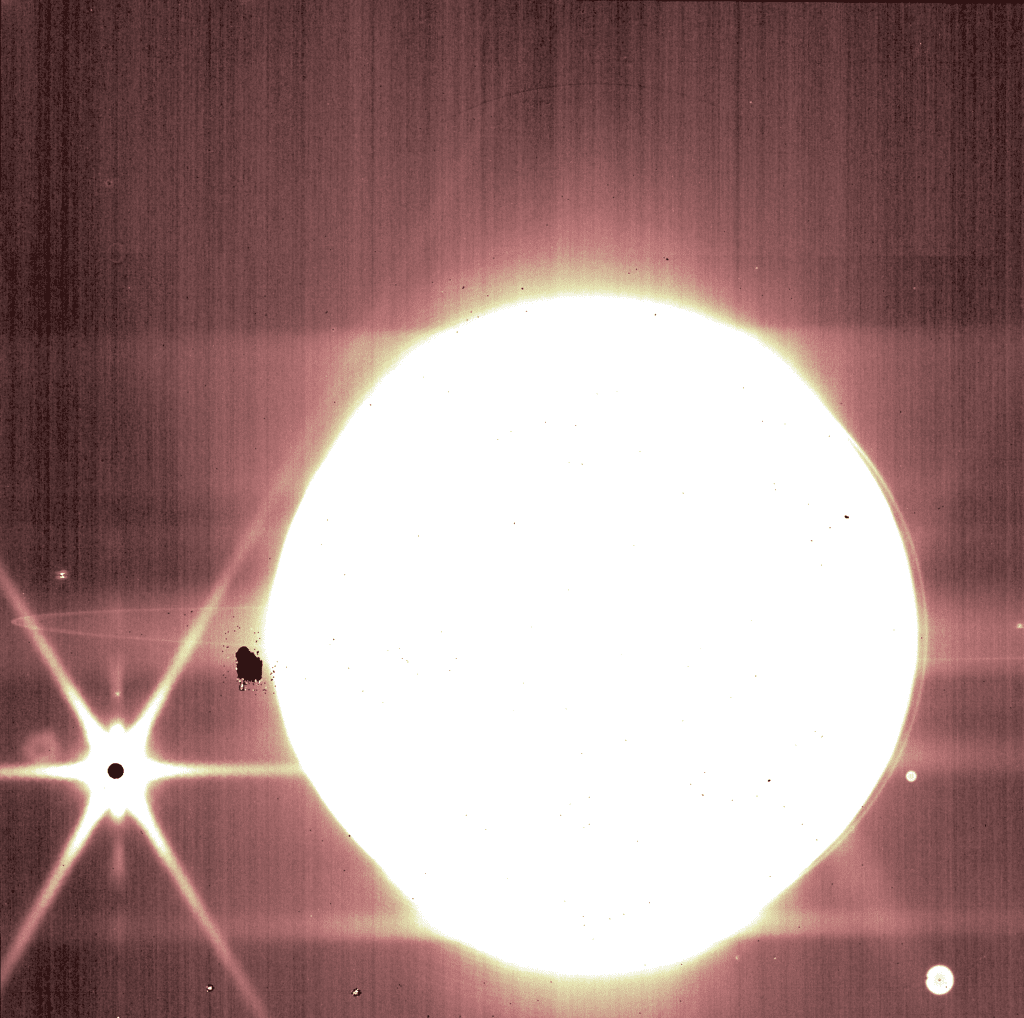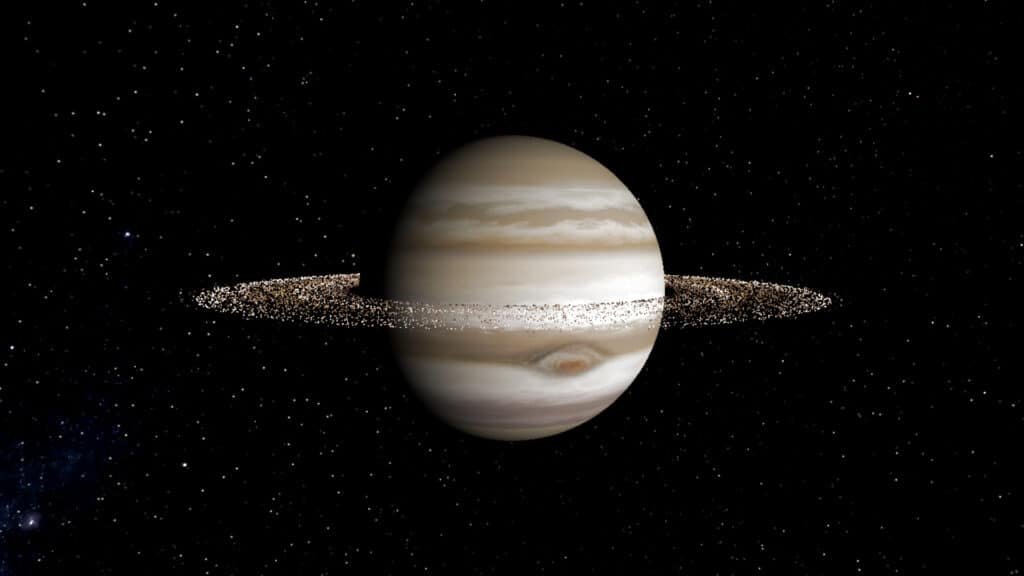
Astronomers have always been puzzled as to why Jupiter doesn’t have rings like Saturn since it’s a much bigger planet. Scientists from the University of California Riverside decided to tackle this topic because, theoretically, Jupiter should have larger rings than its planetary neighbor.
“It’s long bothered me why Jupiter doesn’t have even more amazing rings that would put Saturn’s to shame,” says study author Stephen Kane, an astrophysicist at UC Riverside, in a statement. “If Jupiter did have them, they’d appear even brighter to us, because the planet is so much closer than Saturn.”
Research reveals that Jupiter’s massive moons prevent that vision from lighting up the night sky.
In an effort to understand why Jupiter looks the way it does, scientists ran a computer simulation accounting for the orbits of the planet’s four main moons, as well as Jupiter’s orbit itself, and information about the time it takes for rings to form.
“We found that the Galilean moons of Jupiter, one of which is the largest moon in our solar system, would very quickly destroy any large rings that might form,” explains Kane, adding that it’s unlikely Jupiter had large rings in its past.
“Massive planets form massive moons, which prevents them from having substantial rings.”

Jupiter actually does have rings, but they’re difficult to view with traditional stargazing instruments since they’re so flimsy. Recent images from the James Webb Space Telescope show faint rings visible around Jupiter.

“We didn’t know these ephemeral rings existed until the Voyager spacecraft went past because we couldn’t see them,” explains Kane.
Kane is now turning his attention to Uranus’ rings. That planet has rings that aren’t as large but are more substantial than Saturn’s. Kane will be running simulations of the conditions on Uranus to see what the lifetime of that planet’s rings might be.
There’s an interesting theory as to why Uranus has rings. Some astronomers hypothesize the planet is tipped over on its side as a result of a collision it had with another celestial body, and its rings could be the remains of that impact.
Rings also help astronomers understand a planet’s history, because they offer evidence of collisions with moons or comets that may have previously happened. The rings’ shape and size, as well as its composition, offers an indication about the type of event that formed them.
“For us astronomers, they are the blood spatter on the walls of a crime scene,” says Kane. “When we look at the rings of giant planets, it’s evidence something catastrophic happened to put that material there.”
The study is published in the journal Planetary Science.












